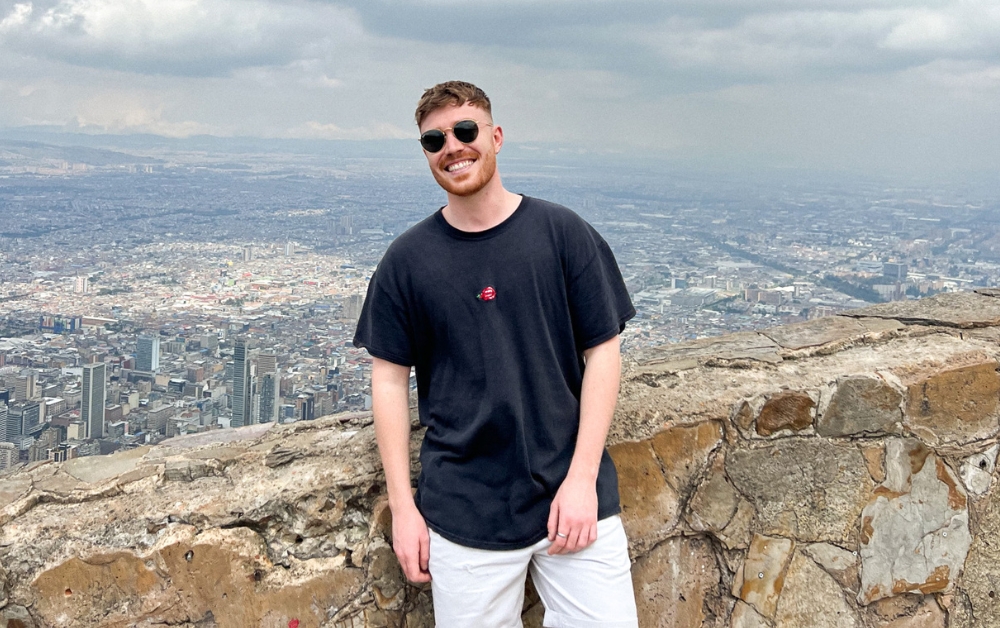A Day in the Life: George Watts, Senior Industrial Designer

What does an average day look like for you as a Senior Industrial Designer at Crux?
No two days are alike, but typically, my day involves a mix of different responsibilities. I start with check-ins with project and design teams to assess deliverables and any challenges we face, which is invaluable for establishing priorities for the day ahead. As a Senior Industrial Designer, my role spans multiple areas: leading and supporting client projects, team management, commercial activities, and contributing to internal design function strategy. Currently, I’m working closely with Crux’s new Head of Design, Hugo Jamson, to shape the future direction and strategy for the design function.
Project work varies significantly and keeps me on my toes – from leading the Industrial Design phases for an innovative on-body device to defining strategic roadmaps for consumer clients’ sustainability objectives. I could be deep into concept generation with pen and paper, crafting surfaces for rapid prototyping analysis of form and ergonomics or collaborating with clients in a brainstorming or workshop setting.
For those new to the field, how is Industrial Design different from other design disciplines?
Industrial design creates a product experience by crafting tangible solutions that combine usability, aesthetics, and functionality. This blend is used to develop and enhance the way users interact with and engage with a physical product. The spectrum of design is vast, however there are commonalities across other design disciplines and Industrial Design, predominantly the need to provide a compelling and intuitive user experience.
What do you enjoy most about your role?
I really enjoy the variety of projects I get involved with. Looking at the last year, I have led a strategic programme to define a roadmap to help our client achieve their net-zero ambitions, worked closely with the engineering function on the development of a novel drug delivery device, explored packaging solutions for biohazardous sample shipping, among many other things. Off project, I’m thoroughly enjoying my growing involvement in commercial activities. Crafting compelling proposals for new opportunities with existing and potential clients and seeing this through to a purchase order is highly rewarding!
What inspires you about the future of industrial design and its potential impact on society?
It’s the ability to make a positive difference in peoples lives, no matter how big or small. My real passion lies with healthcare, as you can objectively see the benefit it can have on the end user. The positive difference could also be a by-product of the primary purpose of a product, take sustainability as an example. We are directly responsible for the impact our designs will have on people and the planet. As a design consultant, it’s my job to ensure our clients are aware of the positive and negative impacts a new product or service may have on all stakeholders, not just the primary user.
What promising trends do you expect to shape the industry?
It’s going to be very cliché, but AI is the hot topic. The development of AI tools and how readily available they are, over the last year or two has been remarkable. I love to believe that we can all benefit from the use of AI software in a professional environment, whether it be Midjourney, ChatGPT or Adobe Firefly. In the design function, we have been exploring these tools for a while, assessing how they can be introduced to our everyday workflow effectively, increasing efficiency, but also helping us engage our clients throughout development programmes. It will be exciting to see how these tools evolve the future of design.
What’s your favourite type of project to work on?
I particularly enjoy unrestricted early-stage design thinking and concept generation. Understanding end users is crucial – I love to put myself in their shoes to understand their needs, requirements, and how I anticipate them interacting with a product.
One of the most rewarding stages of my projects is working with Crux’s Human Factors and Usability team during user studies. It allows me to watch real-world users interact with something I’ve designed, which is highly rewarding and sometimes very humbling! Design is inherently iterative, and user feedback is super important for development.
What advice would you give to someone considering a career in this field?
Be patient and stay open-minded. Your first role can put you on a particular path, there are so many different disciplines and opportunities within the design and creative space. Take time to consider what it is that you really want to do, find interesting, and see a future in. Portfolios then need to be tailored to specific industries, sectors, or companies.
What inspires you outside of work?
Living in Bristol offers the best of both worlds – a busy city with great food and drinking spots, but also easy access to the countryside. I enjoy outdoor walks, pub lunches with friends, and making the most of what Bristol has to offer.
Travel is another passion. I love experiencing different cultures, meeting new people, trying the local food, and seeing some awesome places. I went to Mexico this year, and I am planning a trip to Sri Lanka next year.